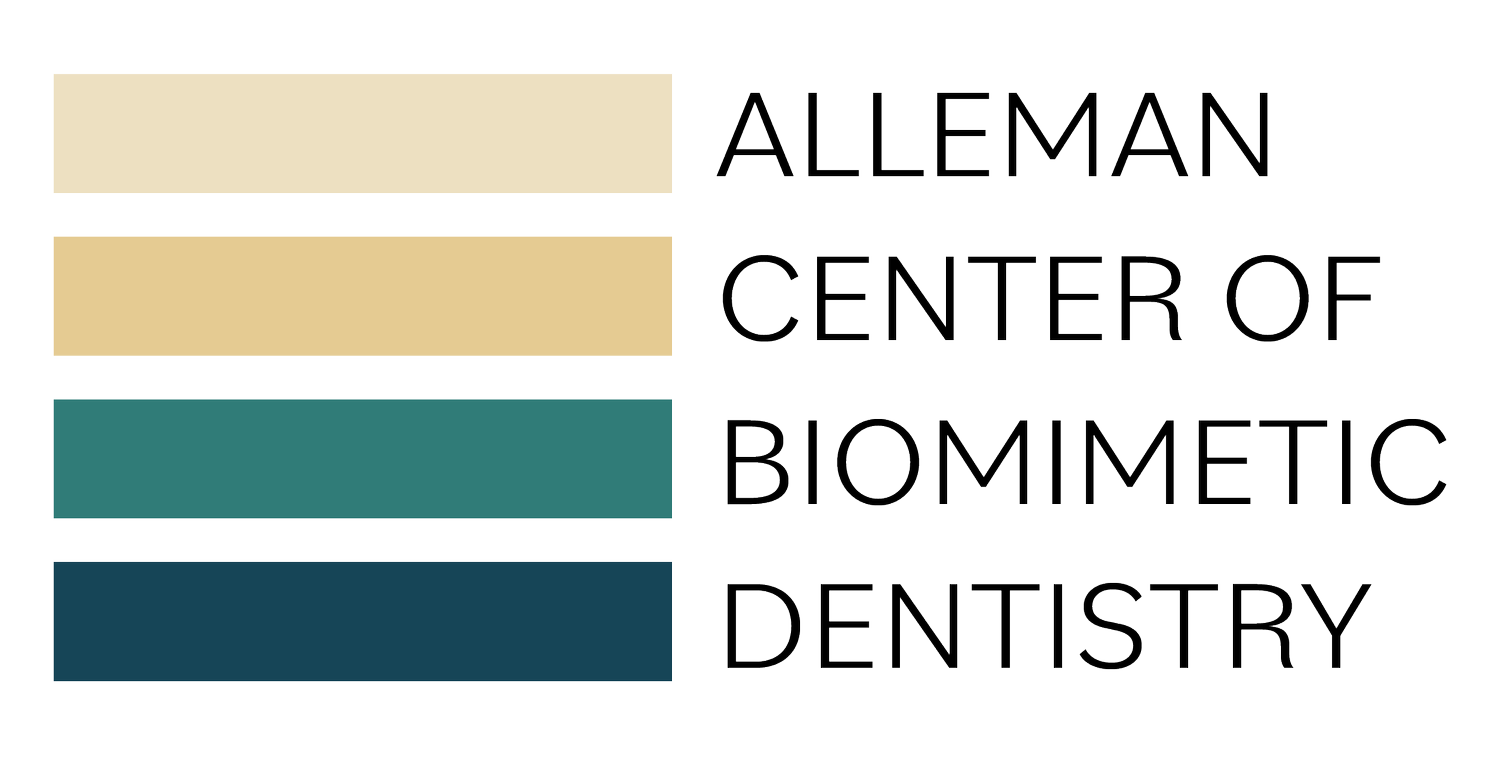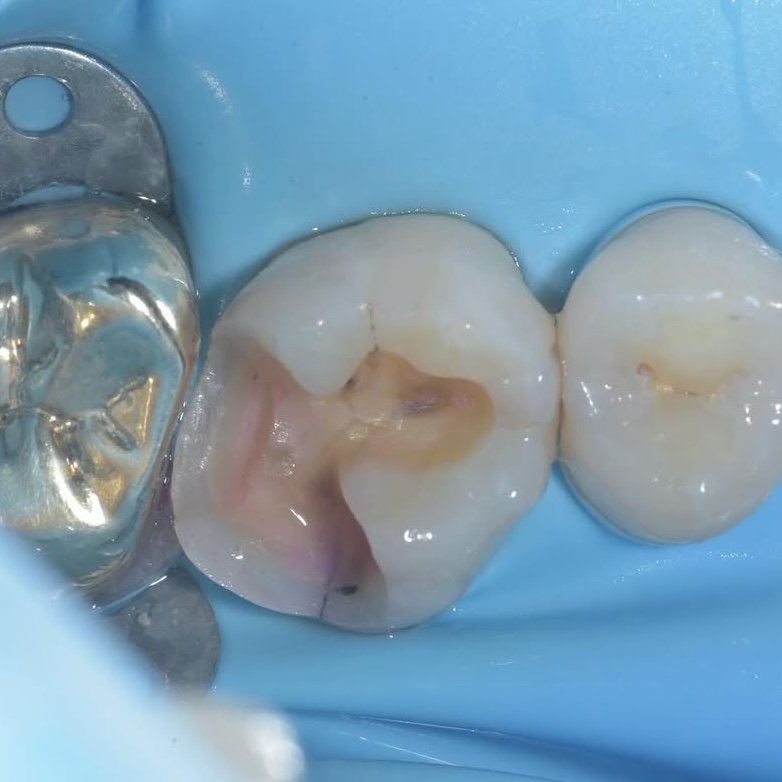Cavities with Cracks in Teeth
Caries, along with the cavities it causes, is the most common dental pathology, but caries is not necessarily the cause of every cavity. Cracks that extend beyond the dentin-enamel junction, in both restored and virgin teeth, function as a highway for bacteria to enter the tooth and can lead to the formation of a cavity. Understanding crack initiation and propagation is an essential part of fully understanding how cavities form in teeth. (Milicich G, Rainey J T. Clinical presentations of stress distribution in teeth and the significance in operative dentistry. Pract Periodont Aesthet Dent. 2000;12(7):695-700.)
A large cavity with caries (shown with caries detector dye) and a crack formed under a large amalgam in this case by Dr. Davey Alleman, DMD. Unfortunately this tooth was non-vital and, due to the severity of the crack, may one day need to be extracted.
Which came first, the crack or the caries?
Cracks create a pathway for bacteria to enter deeper into the tooth. Cavities can structurally compromise a tooth, making it more susceptible to crack initiation. The answer to this question can be either option. Either way, early treatment of both caries and cracks is the best tool for conserving tooth structure and pulp vitality long-term.
Leftover stain from caries detector dye and a dark crack are visible in this photo showing pretreatment of an amalgam restoration. Both caries and cracks formed under this restoration, which, caught early, can by treated using the Six Lesson Approach. Case by Dr. Davey Alleman, DMD.
Why cavities can also contain cracks
Carious lesions may originate from cracks. A common carious lesion that is often mistaken for poor dental hygiene is occlusal effect caries from a peripheral rim fracture. Occurring on the side of large restorations that leave the remaining tooth structure at greater risk of fracture, these peripheral rim fracture, which create occlusal effect caries can be identified by the symmetrical lesion and crack in the middle. Bacteria entered through the crack to create this cavity.
A large unbonded restoration resulted in a peripheral rim fracture and occlusal effect caries, visible in the third photo. Case by Dr. Davey Alleman, DMD.
Cavity and crack prevention in teeth
Dr. David Alleman, DDS created his Six Lessons Approach to Biomimetic Restorative Dentistry to create clear protocols for predictable restorations. The first of steps for creating a more predictable restoration are creating a caries- and crack-free peripheral seal zone. Lesson 2 of the Six Lessons Approach covers structural analysis and crack formation.
Here is the full case showing how the Six Lessons Approach to Biomimetic Restorative Dentistry can treat teeth that have cavities with cracks. Case by Dr. Davey Alleman, DMD.
Early diagnosis and treatment of cracks that may cause cavities is the best way to conserve tooth structure. In Lesson 2 of the Six Lesson Approach, Dr. David Alleman outlined a 1-2-3-4 risk assessment to determine if a tooth was structurally compromised and at risk of fracture. For patients with existing restorations, this can offer the practitioner guidance on whether or not a tooth is at risk of fracture, even without cavities.
Biomimetic restorative dentistry can prevent catastrophic cracks by removing them with high magnification when they are small and by supporting the tooth with bonds that mimic the dentin-enamel junction. These superior bonds allow the tooth to bend and flex like a natural tooth, whereas amalgam and poorly bonded composite allow a tooth to flex more than it is designed to do, increasing its risk of fracture. With the superior bonds of biomimetic dentistry, crack initiation can be prevented.
To learn more about predictable crack treatment and cavity prevention, study the Six Lessons Approach to Biomimetic Restorative Dentistry in upcoming Alleman Center training programs.
Learn more about research into crack diagnosis and treatment in Dr. David Alleman’s Six Lessons Approach Podcast.















